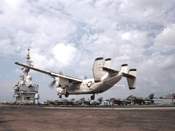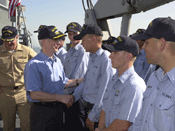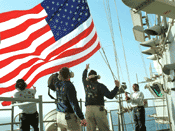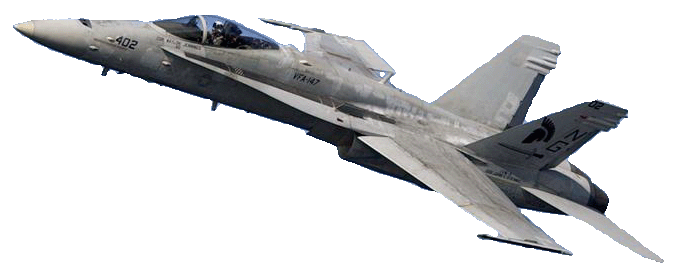 |
Navy Core Values
The U.S. Navy is an elite force of highly trained
professionals dedicated to protecting our freedom and ensuring a secure
future for America. For more than 200 years, Navy men and women have
stood tall for the principles that make America the greatest nation on
earth. These unchanging principles, Honor, Courage and Commitment, are
known as Core Values. To know, understand and faithfully live by them
is the duty of all Navy people.
|
 |
Honor
Honor means being accountable for one’s professional and
personal behavior. All Sailors must:
- conduct themselves in the highest ethical manner in all
relationships with seniors, peers, and subordinates;
- be honest and truthful in their dealings with each other,
and with those outside the Navy;
- be willing to make honest recommendations and to accept
those recommendations from junior personnel;
- encourage new ideas and deliver the bad news, even when it
is unpopular;
- abide by an uncompromising code of integrity, taking
responsibility for their actions and keeping their word;
- fulfill or exceed their legal and ethical responsibilities
in public and personal lives 24 hours a day.
|
 |
Courage
Courage is the value that gives morale and mental strength to
do what’s right, with confidence and resolution, even in the face of
temptation or adversity. As such, Sailors must:
- have the courage to meet the demands of the profession;
- make decisions and act in the best interests of the Navy
and the nation, without regard to personal consequences;
- overcome all challenges while adhering to the highest
standards of personal conduct and decency;
- be loyal to the nation by ensuring that resources entrusted
are used in an hones, careful, and efficient way.
|
 |
Commitment
The day-to-day duty of every man and woman in the Navy is to
join together as a team to improve the quality of work and each other.
As such, Sailors must:
- foster respect up and down the chain of command;
- care for the personal and spiritual well-being of others;
- show respect toward all people without regard to race,
religion, or gender
- always strive for positive change and personal improvement.
- exhibit the highest degree of moral character, professional
excellence, quality and competence.
|
 |
Introduction to the Navy
The words “welcome aboard” will carry a world of significance
once you’ve made one of the biggest decisions a young person can make -
volunteering to enlist in the United States Navy. By doing so, you’ll
become a member of one of the most famous military services in the
world, and have joined one of the biggest businesses in the United
States. Not only will you prove your understanding of citizenship by
offering your services to your country, but you’ll have taken the first
step toward an exciting and well-paying career.
Today’s Navy is a massive and complex organization. The Navy
also plays a vital role in maintaining our national security; it
protects us against our enemies in time of war, and supports our
foreign policy in peacetime. Through its exercise of sea power, it
ensures freedom of the seas, so that merchant ships can bring us the
vital raw materials we import from overseas - like petroleum, coffee,
rubber, sugar, and aluminum. Sea power makes it possible for us to use
the oceans when and where our national interests require it, and denies
our enemies that same freedom.
|
 |
First Enlistment
Your entry into the Navy starts at your home-town recruiting
station, with interviews and processing by a trained petty officer. The
actual swearing in takes place at a military examination processing
station (MEPS). An enlistment (often called a hitch or cruise) is for
four to six years.
All recruits begin their Naval careers at the Naval Training
Center (NTC) in Great Lakes, Illinois.
Naval Training Center, Great Lakes consists of three commands:
Administrative Command (AdCom), Service School Command (SSC), and
Recruit Training Command (RTC).
AdCom maintains buildings and grounds at the NTC, and provides
housing, clothing, pay, and medical and dental care. AdCom also handles
recreational and Navy Exchange facilities, communications, postal and
transportation service, and police and fire protection.
The SSC consists of the schools that provide technical
training for various ratings. These schools train Sailors from the
fleet and recruits who’ve finished bootcamp.
The RTC is where you go first to prepare for life in the Navy.
|
 |
What a Life!
Navy life is probably not what you think it is… it’s better!
You’ll have the opportunity to travel to exotic places all over the
world. You’ll have career opportunities that could lead you to
assignments on a Naval submarine, surface ship or military aircraft.
You’ll make friendships that will last a lifetime.
And maybe you’re not thinking about things like great pay,
terrific health benefits, and educational opportunities right now, but
you don’t have to, because the Navy’s got them covered.
Once assigned to active duty, you could be stationed at sea,
or at one of the Naval bases around the country or the world. Sound
like a cool life? It is, but anything worthwhile takes hard work,
commitment and dedication, and the Navy puts you to the test. Do well
and expect good things to follow, both while in the Navy and when you
leave it!
The Navy is a splendid opportunity for many people. We think you may
want to consider such a career move carefully if you want:
- Up to $50,000 for college
- Worldwide travel opportunities
- State-of-the-art technical training
- Excellent pay with regular raises
- Regular promotions
- Challenges that prepare you for tomorrow
|
 |
Opportunities for Women in the Navy (as of December 31, 1999)
- There are 51,947 women in the Navy, accounting for 13.7% of
the total active-duty force.
- Enlisted women are assigned to all but three ratings, all
submarine associated: MT, FT, and STS
- Women officers are assigned to all designators except
submarine warfare and special warfare.
- About 91% of all Navy Billets are open to women. Billets
closed to women are those on submarines and PC’s due to prohibitive
habitability modification costs; and those associated with SEALS and
Marine support that falls under the direct ground combat exclusion or
collocation exclusion.
- The Navy has more than 12,000 women currently assigned to
ships, afloat staffs, airwings, and other shipboard aviation units.
- Women are assigned to combatants and non-combatants.
- Female aviators: more than 540 female officers are in
aviation, 246 pilots, 108 NFOs, 102 training as pilots, 72 training as
NFOs. Additionally, 14.2% of Navy enlisted women serve in aviation
ratings.
|
 |
|

